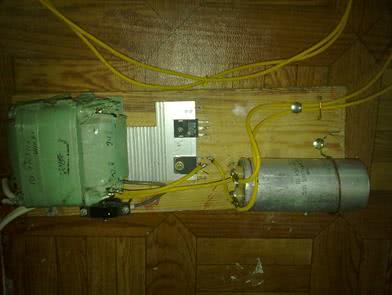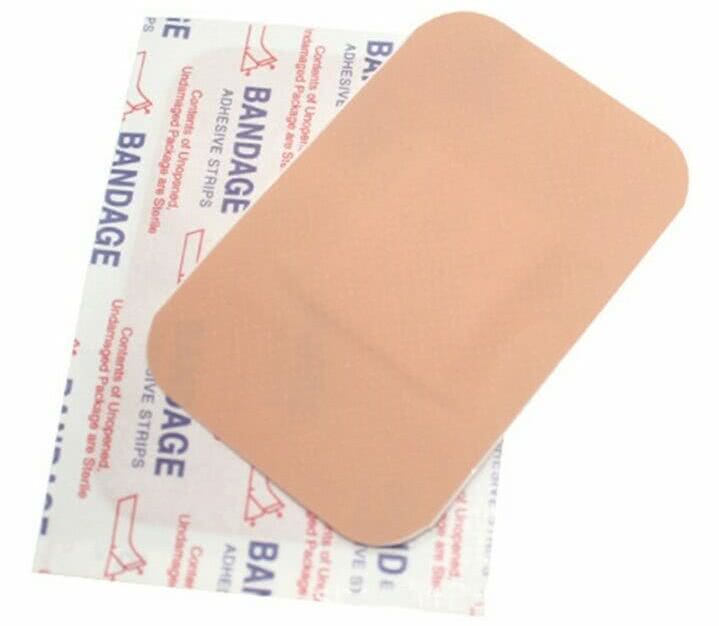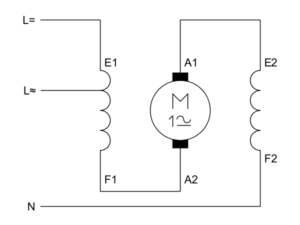List for everyone
The above books are great, but if you are familiar with electronics a little bit. Though I would say you should read those above books as well for making your concepts more strong or to revisit your concepts, if you don’t you will do greats without them.
The below list is for everyone, you can read them anytime.
-
- Make: Electronics: Learning Through Discovery by Charles Platt
- The Art of Electronics by Paul Horowitz
- Exploring Arduino: Tools and Techniques for Engineering Wizardry by Jeremy Blum
A general overview of “Make: Electronics: Learning Through Discovery”
This is another best book from Make magazine for learning basic electronics. As the name suggests there is a lot of practical work involved. In this book, you not only learn the theory but also get your hands dirty with some basic electronics. The author says, Make: Electronics is the book that I wish I had owned when I was a young teenager, struggling to learn the basics of electricity and electronics. My goal is to give readers today an easier learning experience than the one I had to go through. And I want it to be fun.
Everything is represented with beautiful illustrations and diagrams which the reader will enjoy while reading it.
The book starts with basic electronics concepts, then goes to some advanced topics such as working with integrated circuits. But don’t worry, everything is explained in a very easy way.
Talks about different techniques while you playing with electronics. Such as soldering, the book teaches how to solder well, how to differentiate between a good and bad soldering wire, and a lot of more fun stuff.
This book is the best starting point for everyone into electronics, no matter if you are a student or hobbyist, you will find great value in this book. If you are interested in this book and want to know more about it, check out this link, Make electronics by Charles Platt (Amazon link).
A general overview of “The Art of Electronics”
A truly remarkable book written by Paul Horowitz, a Research Professor of Physics and of Electrical Engineering at Harvard University, wherein 1974 he originated the Laboratory Electronics course from which emerged The Art of Electronics, and Winfield Hill is by inclination an electronics circuit-design guru.
This book needs no introduction. A remarkable gift for engineers as well as hobbyists. The book will teach you almost everything you need to know as a beginner. And will lead you from basic concepts to more complex and advance topics.
The book deals with real-life situations, no ideal assumptions. For example, no ideal assumptions are taken while analyzing the circuits. Usually, books take an ideal assumption like there is no loss in the circuit to make the mathematics easy, and when you actually design the circuits, results are a little different.
At the start, the book deals with analog circuits designs and later moves to the basics of digital electronics. So, the reader gets the taste of both analog and digital electronics.
I personally love this book. The reason I am listing it at three because I think it is a little advance for complete beginners.
To know more about this amazing book, here is the Amazon link, The Art of Electronics. If you are interested give it a try. It is a little expensive but the money worth it.
How to Diagnose and Fix Everything Electronic, 2nd Edition
How to Diagnose and Fix Everything Electronic, Second Edition this book will help you to repair your gadget/device. If your gadget is damaged due to internal circuitry, Instead of buying a new gadget that is too expensive you can repair and extend the life of digital electronic devices, just by reading this amazing book.
This book includes electronic projects that are explained in step-by-step procedures. It contains neat sketches and circuit diagrams as well.
This book explains the following:
- How to choose the proper tools and set up your workbench
- Working of electrical components and why they fail, analyse and work
- Helps to perform preliminary diagnoses based on symptoms
- Use different test equipment, including digital multimeters, ESR meters, frequency
- counters, and oscilloscopes
- Interpret block, schematic, and pictorial diagrams
- Disassemble products and identify sections
- Analyze circuits, locate faults, and replace dead parts
- Re-establish connections and reassemble devices
How do you read an electronic book file?
An electronic book reader is a small, portable computer designed for
reading books stored in a digital format such as ASCII, PDF, HTML, RTF, or
another similar format. (Currently the two most popular ebook formats are
EPUB, a worldwide, open standard that evolved from an earlier standard called OEB (Open ebook) and widely used by Sony Readers and most other ebook readers, and AZW, a
proprietary format developed by Amazon and currently readable only
on its Kindle reader. There are a few other formats including MOBI and LRF,
but you don’t hear about them so much.) However you go about it, books take up very little space when you store
them in electronic format: you could easily fit 10,000 electronic
copies of the Bible onto a single DVD. Most ebook readers can store hundreds
or even thousands of titles at a time and most now have Wi-Fi Internet
connections so you can download more books whenever you wish.
Photo: You can read electronic books right now, even if you don’t have a handheld ebook reader.
There are lots of ebook reader apps and there’s free electronic book software available for all the popular PC operating systems. You can also download versions of the Amazon Kindle that work on a PC, Mac, iPod/iPad, iPhone, or Android smartphone. Here’s the Caliber electronic book reader running on a normal computer screen, showing the first page of F.Scott Fitzgerald’s The Beautiful and Damned.
The most important part of an ebook reader is the screen. The first
ebooks used small versions of LCD laptop screens which have a
resolution (sharpness) of about 35 pixels per cm (90 pixels per inch).
You could easily see the dots making up the letters and it was quite
tiring to read for more than a few minutes at a time. The latest
ebooks use an entirely different technology called electronic ink. Instead of
using LCD displays, they show words and letters using tiny, black and
white plastic granules that move about inside microscopic, spherical
capsules under precise electronic control. Displays like this have
about twice the resolution of ordinary computer screens, are clearly
visible in sunlight, and use much less power. In fact, they’re almost
as sharp and easy to read as printed paper. We’ll see how
these screens work in a moment.
The lack of books in electronic format was one of the things that
used to put people off using ebook readers—and that’s what made Amazon.com’s
Kindle reader such an instant success. Amazon already worked
with virtually all the world’s publishers as a bookseller, so it was
able to make huge numbers of titles available for Kindle in electronic
format—over 88,000 books were available on the launch date.
Today, most books are available in ebook format as well as print,
and many old, long-out-of-print titles have also been resurrected in
ebook form. When I first got an ebook reader, about a decade ago, it
was quite hard to find most books in electronic form; today, the position
has completely reversed and you can find almost everything in ebook form
without much effort.
Best basic electronics books for everyone
The term basic electronics is itself a huge topic, you can’t specifically define it nor you just can learn it in a short time. It needs time, practice, and interest.
For me, learning basic electronics should make you able to understand the basic of electricity, should make you able to understand the working of electronics components and instruments, should make you able to understand the working of some basic circuits, and should also make you able to somehow design you own small circuits and projects.
I just keep the above in my mind and make the following list of books, that I think will make to understand the basics of electronics. You will be able to use electronic instruments like a multimeter and make your measurements of voltages and currents, and much more.
Общая теория радиолокации и радионавигации. Распространение радиоволн
Название: Общая теория радиолокации и радионавигации. Распространение радиоволнАвторы: А.Н. Фомин, В.А. Копылов, А.А. Филонов, А.В. АндроновГод: 2017Издательство: СФУЯзык: русскийФормат: pdfСтраниц: 318Размер: 11 mbВ данном учебнике рассмотрены физические процессы, происходящие при распространении радиоволн вблизи поверхности и в атмосфере Земли
Особое внимание уделено описанию физических процессов, происходящих в линиях передачи энергии СВЧ-диапазона. Подробно изложены в теоретическом и практическом плане конкретные типы согласующих устройств, которые применяются в прямоугольных волноводах, коаксиальных линиях для обеспечения передачи максимальной мощности в нагрузку
Инверторы питания ламп подсветки ЖК телевизоров, мониторов и ноутбуков
Название: Инверторы питания ламп подсветки ЖК телевизоров, мониторов и ноутбуковАвторы: Тюнин Н.А., Родин А.В.(ред.)Год: 2012 Серия: Ремонт №122 Издательство: Солон-Пресс Язык: русский Формат: pdf Страниц: 112 Размер: 12,79 МбВ очередной книге популярной серии «Ремонт» рассматриваются DC/AC-преобразователи (по терминологии производителей — инверторы), которые используются для питания электролюминесцентных ламп подсветки жидкокристаллических панелей. По статистике ремонтных организаций это наименее надежный узел современных телевизоров, мониторов, ноутбуков и других устройств, в которых используются ЖК панели.
#3 All New Electronics – Self Teaching Guide by Harry Kybett & Earl Boysen
“Understand the underlying theory” – A great book to learn theory!
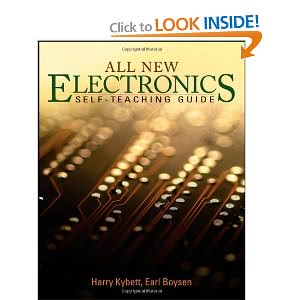
We saw two great books on practical electronics by now! They offer not just practical circuits, but the above two books helps you learn theory also while making circuits. But those two books are not that great when it comes mathematical analysis and pure science based theory explanation. What about following such a book? Here I recommend “All New Electronics-Self Teaching Guide” from Wiley publications to satisfy your theoretical needs. As I wrote earlier in this article -theory is really important. But you grasp theory more clearly after experimenting with stuff! At least, my personal experience is that way! And that is why I recommend theory book as #3 and practical ones in #1 and #2
You can learn the following from this book so easily:-
- Mathematical calculations to understand operation of circuits
- Concepts you need to understand to design electronic circuits
- Key components of electronics like Transistors,IC’s – get a really good understanding of them.
- Understand power supplies, oscillators, amplifiers,filtering and more
About the Authors:-
In fact this book is the third edition. Harry Kybett wrote the first two editions (first published 30 years ago) and after his demise, Earl Boysen wrote the latest third edition. Harry Kybett was director of engineering at Columbia Pictures. Earl Boysen is an engineer and co author of the popular “Electronics for Dummies” book.
Программы для разводки печатных плат
программы для радиолюбителей
На данный момент существует множество программ и онлайн сервисов для разводки печатных плат. Когда в интернете находишь интересную электронную схему то сразу хочется её собрать своими руками, но не всегда к ней прилагается рисунок печатной платы. Когда-то давно, дорожки рисовали лаком на фольгированном текстолите. Сейчас радиолюбители не рисуют дорожки от руки, а распечатывают с помощью лазерного принтера — эта технология называется ЛУТ. Можно отдать схему специалистам, которые за определённую сумму все сделают, но лучше освоить одну из программ и сделать все своими руками.
Я подобрал несколько программ для разводки (трассировки) печатной платы.
Sprint-Layout
Самая популярная программа среди радиолюбителей, почти все новички начинали именно с неё. Простой и понятный интерфейс, существует русифицированная версия. Спринт лайт имеет большую базу электронных компонентов (макросов), которые можно скачать в интернете. Огромное количество обучающих видеороликов на Ютубе, помогут освоить весь интерфейс и научат рисовать печатные платы. Программа является условно — бесплатной.
easyeda
Китайский онлайн сервис с большими возможностями. В Китае студенты создают проекты с помощью данного сервиса и его преподают в некоторых учебных заведениях. Основное удобство заключается в том что созданные проекты можно редактировать на любом компьютере с доступом в интернет, необходимо только пройти простую регистрацию для создания аккаунта. Easyeda имеет огромную базу электронных компонентов которые постоянно обновляются и добавляются самими пользователями. Данный сервис имеет функцию автоматической трассировки печатной платы и симуляцию электронных схем. Интерфейс интуитивно понятный с поддержкой русского языка. После того как печатная плата разведена на дорожки её можно заказать в этом сервисе, причем промышленного качества, а можно и не заказывать, а распечатать на принтере и сделать самому. Также можно открыть доступ к проекту и делится им с другими пользователями или совместно создавать один проект.
ZenitPCB
Простая и бесплатная программа для рисования принципиальных схем с возможностью трассировки. Минусом является ограничение контактных площадок в 800 штук. База элементов около 1000.
DesignSpark PCB
Мощная программа с возможностью автоматической трассировки печатных плат. Подходит как для новичков так и для профессионалов.
DesignSpark PCB это бесплатная программа со встроенными специализированными калькуляторами для разных расчётов облегчающими подбор компонентов. На официальном сайте можно скачать библиотеку готовых печатных плат. Единственный минус это отсутствие русского языка в интерфейсе.
Я пользуюсь двумя;
Программа Sprint-Layout
Онлайн сервис easyeda.com
Для моей деятельности, на данном этапе моего развития, этого вполне хватает. В освоении перечисленных программ, справится любой начинающий радиолюбитель.
Дальше »
Electronics Theory Books
The heavy electronics theory books tend to be a bit more pricey than standard books. The two books I have listed here should be worth the investment though, if you see yourself working with electronics for many years to come.
The Art of Electronics
The Art Of Electronics is a book that offers a vast amount of circuits and theory. It is not a “Getting Started” type-of-book, but rather a collection of theory and circuits. And it is really helpful to have as a reference book when working with electronics. This is one of the electronics books that I have in my bookshelf, and it has been really helpful both in my studies and in projects later in life.
Click here to buy it on Amazon.
Foundations of Analog and Digital Electronic Circuits
This book on electronics is recommended by many as a really detailed book on all the fundamentals of electronics. It has a lot of theory and would be suitable for you if you are studying electronics or if you are really dedicated to learning all the ins and outs of electronics.
If you have this book and The Art Of Electronics you will have two electronics books containing almost everything there is to know about electronics.
Click here to buy it on Amazon
Final words
Every book is great. Every basic electronics book is awesome, get any basic book and you will learn all the basics concepts. If I say that the book is great, it is just my opinion. Maybe for other people, it is not.
You got so many choices. Above are the books that have proven themselves among different people, and people found them effective. I read them myself and found them amazing.
Above listed books teaches you the basics of electronics in an easy and effective way. These books are not theory-focused, they lead you through practices and gives you hands-on experience playing with electronics.
I hope this article kinda helped you.
Other useful posts:
- Buying best soldering stations – see what matters
- Spectrum analyzers for beginners
- Best oscilloscopes for beginners (An easy buying guide)
Thank you and have a good life.
Is there any other option available?
Of course, there are so many books out there. There are lots of youtube channels that you can follow to learn electronics.
When you get into electronics, the first part is what you want specifically in electronics. Let me explain. I myself an electronics engineer, but not all electronics are fun for me. I only enjoy designing and testing the circuit especially the analog circuits. And this whole site is all about circuit designing and testing.
My point is just first to read the above basic electronics books, find the part which you find exciting. Then give dedicated time to that particular area only.
Conclusion
All the books we featured on this list can be used as guides and reference points for those learning about electronics.
Some are more fit for engineers and students who already have some knowledge in the field, while others are designed for absolute beginners.
So depending on your knowledge level, some of these references will be better than others.
That being said, books are one of the most efficient and accurate ways for people to learn about new things, so if you’ve been itching to get into the wild world of electronics, this is a great place for you to start!
Last Updated on June 18, 2021 by Tom
Contents
MATLAB R2007/2008/2009 для радиоинженеров
MATLAB R2007/2008/2009 для радиоинженеров. Книга посвящена применению матричной системы MATLAB в радиотехнических расчетах и в моделировании радиоэлектронных устройств и систем. Впервые описаны новейшие версии MATLAB R2007a,b/2008a,b/2009a с пакетами расширения Simulink 6/7, Signal Processing Toolbox, Filter Design Toolbox, RF Toolbox и Blockset, Wavelet Toolbox, Control Systems, SimPowerSystems и др. Описаны новейшие пакеты Simscape и SimElectronics моделирования электронных схем. Наряду с функциями командного режима работы описан интерактивный и визуально ориентированный инструментарий пакетов c графическим интерфейсом пользователя GUI и математическое моделирование систем и устройств в среде Simulink 6/7. Описана интеграция MATLAB с современными цифровыми радио измерительными приборами и виртуальными лабораториями для управления приборами и обработки реальных осциллограмм.
Who invented electronic books?
- ~3000BCE: Ancient Egyptians make the first paper from the stem of the papyrus plant.
- 105CE: Chinaman Ts’ai Lun develops modern paper from hemp fiber.
- ~1450: German Johannes Gutenberg invents the modern process of printing with movable metal type, which leads to a vast increase in the popularity of books.
- 1945: In a famous article in Atlantic Monthly called As We May Think, US government scientist Vannevar Bush proposes a kind of desk-sized memory store called Memex, which has some of the features later incorporated into electronic books and the World Wide Web (WWW).
- 1968: Computer scientist Alan Kay imagines a portable computerized book, which he nicknames the Dynabook.
- 1971: Michael Hart launches Project Gutenberg at the University of Illinois: an electronic repository for classic, out-of-copyright books.
- 1990: Sony launches its Data Discman, a portable electronic reader costing $550 that stores and reads books from compact discs (CD-ROMs). It is a commercial flop.
- 1990s: Encyclopedia publishers such as Britannica and Dorling Kindersley (DK) experiment with making their books available on interactive CD-ROMs. DK wins many awards for its CD-ROMs, but closes its multimedia business in the late 1990s as competition mounts from the Internet.
- Late 1990s: Several new handheld, electronic book readers are launched, including the SoftBook, RocketBook, and Everybook—but fail to make much impact on the marketplace.
- 2000: Best-selling horror author Stephen King launches a short novel called Riding the Bullet in electronic format and sells over half a million copies.
- 2001: Larry Sanger and Jimmy Wales give the world Wikipedia—an electronic encyclopedia anyone can contribute to.
- 2007: Amazon.com launches its wireless Kindle reader with thousands of electronic books available in electronic format, along with newspapers, RSS feeds, and other forms of «digital content.»
- 2010: Amazon Kindle becomes Amazon’s number one bestselling product, confirming that electronic books (and readers) really have arrived!
- 2010: E Ink announces Triton, a colored version of its ebook screen technology.
- 2011: Project Gutenberg celebrates 40 years of producing and distributing electronic books.
- 2014: A report by Pricewaterhouse Coopers predicts ebooks will outsell printed books by 2018, but UK bookstore founder Tim Waterstone argues the market will go into decline.
- 2014: Sony stops selling its Readers after growing sales of smartphones and tablets cause a major fall in sales.
- 2015: The Association of American Publishers reports a dramatic reversal of fortune, with a 10 percent fall in sales of ebooks (which still account for only a fifth of the market).
- 2016: E Ink announces Advanced Color ePaper (ACeP), an improved color screen.
- 2018: Walmart announces it will challenge Amazon’s dominance of the ebook market in a bold partnership with Japanese firm Rakuten.
- 2018: Hachette boss Arnaud Nourry attacks ebooks for their stupidity and lack of creativity.
Применение микроконтроллеров в звуковой технике (+CD)
Название: Применение микроконтроллеров в звуковой технике (+CD)Авторы: С.Р. Баширов, А.С. Баширов, Р.И. АвиловГод: 2008Издательство: ЭксмоСерия: РадиоэлектроникаФормат: PDFСтраниц: 253Размер: 30,11 МбВ книге описаны практически все виды устройств, применяемых в звукотехнике, — от простейших темброблоков до музыкального центра и многофункционального усилителя высокого класса. При разработке устройств был применен блочный принцип проектирования, позволяющий разрабатывать и отлаживать отдельные узлы независимо друг от друга. Единая система соединений (разъемов) позволяет комбинировать различные узлы в комбинацию с желаемыми параметрами и существенно облегчает отладку конечного устройства. Все конструкции, описанные в книге, — реальные. Программы, приведенные в данной книге, были проверены и отлажены на реальных устройствах.
Защита информации техническими средствами
Название: Защита информации техническими средствамиАвторы: Каторин Ю.Ф., Разумовский А.В., Спивак А.И.Год: 2012Издательство: НИУ ИТМОЯзык: русскийФормат: pdfСтраниц: 418Размер: 10.33 mbВ учебном пособии в простой и доступной форме излагаются основные способы съема конфиденциальной информации с помощью технических средств и принципы построения средств и систем защиты.Пособие предназначено для формирования у студентов знаний по основам инженерно-технической защиты информации, а также развития в процессе обучения системного мышления, необходимого для решения задач инженерно-технической защиты информации.
Practical Electronics for Inventors, 4th Edition
Practical Electronics for Inventors, 4th Edition book is perfect for electrical engineering students who have a strong wish to boost their knowledge in electronics and gain the skills necessary to develop their own fun gadgets.
This book is written by experienced engineers and professionals to provide the necessary information with schematics and illustrations. It gives you an idea about the design and builds electronic devices and how to select the components.
It also features instructions on voltage regulators, programming logic, operational amplifiers, and many more.
Practical Electronics for Inventors, 4th Edition book provides detailed information that includes:
- Active components
- Passive components
- Microcontrollers
- Logic gates
- LCD display
- digital electronics
- DC motors and stepper motors
- Speakers, Microphones, and audio amplifiers.
У.Титце, К. Шенк. Полупроводниковая схемотехника (Том 1, 2)
Название: Полупроводниковая схемотехника (Том 1, 2)Авторы: У. Титце, К. ШенкГод издания: 2008Издательство: ДМК прессЯзык: русскийФормат: pdfСтраниц: том 1 — 832, том 2 — 942Размер: 109,02 МбКнига представляет собой фундаментальный труд, объединяющий принципы устройства полупроводниковых элементов (диоды, биполярные и полевые транзисторы, интегральные микросхемы) и основы создания из этих элементов различных функциональных узлов аналоговой техники (усилители, модуляторы, фильтры, радиоприемники) и цифровой (спусковые схемы, счетчики, регистры, шифраторы и дешифраторы, устройства памяти и т.д.).
How do you store a book in electronic form?
An ebook is really just a computer file full of words (and
sometimes images). In theory, you could make an ebook just by typing
information into a word processor. The file you save has all the
elements of an electronic book: you can read the information on a
computer, search it for keywords, or share it easily with someone else.
The first attempt to create a worldwide library of ebooks was called
Project Gutenberg
and it’s still running today. Long before the World Wide Web came
along, a bunch of dedicated Gutenberg volunteers took printed books and
scanned or typed them into their computers to make electronic files
they could share. For legal reasons, these books were (and still are) mostly classic
old volumes that had fallen out of copyright. The electronic versions
of these printed books are very basic, text-only computer files stored
in a format called ASCII (American Standard Code for
Information Interchange)—a way of representing letters, numbers, and
symbols with the numbers 0-255 that virtually every computer can
understand.
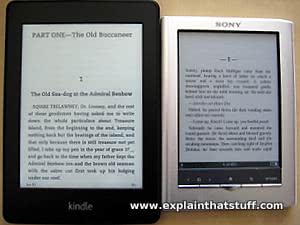
Photo: The Amazon Kindle Paperwhite electronic book reader (left) alongside the rival Sony eReader (right). This Kindle has a fairly unobtrusive set of LED lights built around the screen to make reading easier in the dim evening light. Although it’s hard to see in this photo, the Paperwhite does have a much whiter screen than the Sony. Even so, I find the text much sharper on the Sony. It’s also worth pointing out that I’ve owned two of these Sonys and the screen on one was noticeably better than the other. In other words, the quality of ebook screens definitely does vary.
The problem with ASCII is that the text contains very little
formatting information: you can’t distinguish headings from text,
there’s only one basic font, and there’s no bold or italics. That’s why
people developed much more sophisticated electronic files like PDF
(Portable Document Format). The basic idea of PDF was to store an
almost exact replica of a printed document in an electronic file that
people could easily read on screens or print out, if they preferred.
The HTML files people use to create web pages are another kind
of electronic information. Every HTML page on a website is a bit like a
separate page in a book, but the links on web pages mean you can easily
hop around until you find exactly the information you want. The links
on websites give you powerfully interconnected information that is
often much quicker to use than a library of printed books.
The greatest strength of ASCII, PDF, and HTML files (you can read
them on any computer) is also their greatest weakness: who wants to sit
staring at a computer screen, reading thousands of words? Most screens
are much less sharp than the type in a printed book and it quickly
tires your eyes reading in this way. Even if you can store lots of
books on your computer, you can’t really take it to bed with you or
read it on the beach or in the bath-tub! Now, there’s nothing to stop
you downloading simple text files onto something like an iPod or a
cellphone and reading them, very slowly and painfully, from the small
LCD display—but it’s not most people’s idea of
curling up with a good book. Cellphones have very bright displays that
can interfere with your sleep if you use them late in the evenings
(but the stuff you may have read about blue light interfering
with your sleep isn’t as clearcut as it sounds.)
What we really need is something with the
power of a computer, the portability of a cellphone,
and the friendliness and readability of a printed book. And that’s
exactly where electronic book readers come in.
List for complete beginners
Let’s talk about those people who are just getting with electronics and know nothing about it. The following books are written for such people. Things and concepts in these books are presented in a simple yet understanding way.
- Getting Started in Electronics by Forrest M. Mims III
- Electronics for Dummies by Cathleen Shamieh
- Understanding Basic Electronics by ARRL
A general overview of “Getting Started in Electronics”
This book is written by Forrest M. Mims, III, who has written dozens of books, hundreds of articles, invented scientific devices, and traveled to the Amazon for NASA. This book talks about the basics of electronics in a way you will find hard to find anywhere else. The author, Forrest Mims, has a unique way of teaching and delivering the concept which a reader can feel while reading this book.
The book starts with the basics of electronics, later talks about analog and digital electronics and components, explains how each component works, how components get together and make circuits for various applications.
Besides the theory, there is a lot of practical stuff to do. I love doing electronics, as for me theory without practical electronics is not complete. And this book includes circuit assembly tips and 100 electronic circuits and projects you can build and test.
You get to make 100 unique circuits all by yourself. The circuits are purely based on the knowledge you learn in the book so don’t worry about any complications and confusion.
If you are interested in this book and want to know more about it, check out this link, Getting started in electronics (Amazon link).In my opinion, you will enjoy reading this handwritten book a lot.




